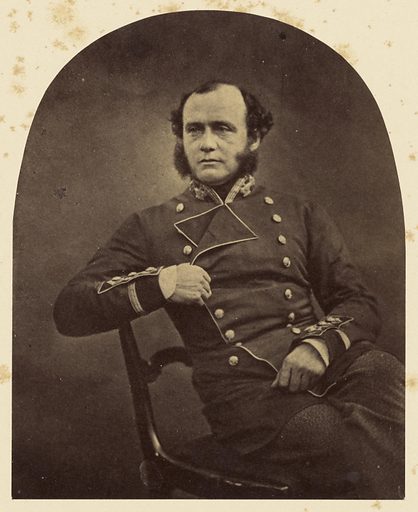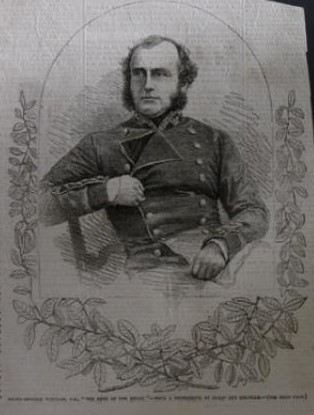Putting Somerset on the early photographic map
Posted on 18th July 2021
Somerset’s first professional photographer was someone about whom relatively little is known, even amongst photographic historians. He was Thomas Sharp (1806-1896), who was born in London, but who lived much of his early life in North Devon. This blog post records our efforts to have Sharp recognised as the photographer responsible for a portrait which until now has been credited to Roger Fenton, perhaps the best known early photographer.

Photograph: Major-General Charles Ashe Windham – Look & Learn
Sharp set up Somerset’s first photographic studio in November 1841 at the Royal Victoria Park, Bath, where he remained for two years, other than a brief stay in Taunton. From 1843 to 1853, he worked in Weston-super-Mare, Yeovil, probably Chard, and then Dorchester and Weymouth, as well as in Devon. By 1853, he had returned to London, and set up a studio in Old Bond Street. In the course of researching Sharp’s career from that point, we came across a portrait of Major-General Charles Ashe Windham, the ‘hero of the Redan’. An engraving made from the photograph was published in the Illustrated London News on 6 October 1855, four weeks after Windham led the charge on the Great Redan at Sebastopol. The acknowledgements stated that the engraving was “from a photograph taken by Messrs Sharp and Melville at their establishment in Old Bond Street, the day before Colonel Windham [as he was then] left England for the Crimea” – Windham’s diary and letters show that he embarked at Southampton on 9 August 1854 https://archive.org/details/crimeandiaryand00windgoog/page/n33/mode/2up?view=theater Windham’s bravery was mentioned in a despatch of 9 September 1855 by General James Simpson, commander of the British forces, and was swiftly recognised by the British press. So, the photograph taken a year earlier by Thomas Sharp, and engraved by his colleague Alexander Melville (1823-1892), became more prominent than they might have expected. The Illustrated London News followed up the publication of the engraving with a further article on 3 November 1855: “since its publication, the artists have completed a life size portrait of the original in oils …. The talent bestowed on all the works of portraiture at this establishment is of a superior nature; Mr Sharp being a photographist of many years’ reputation, and Mr Melville an artist of considerable merit, and whose abilities have obtained for him the patronage of her Majesty on several occasions …. This fine portrait of General Windham has been purchased by Mr Agnew of Manchester, with a view to publication …” Agnew’s purchase, combined with his sponsorship of Roger Fenton’s Crimea photographs, is what we now believe led to the credit for the photograph being given to Fenton, rather than to Sharp and Melville. The copies of the matching photograph, clearly the basis for the engraving, in several major photographic collections were credited to Fenton – those in the National Gallery, the Library of Congress in Washington, and the Art Institute of Chicago. Following our representation, all three have now amended their records for this photograph and changed the attribution to Sharp & Melville. We now feel that the reputation of Somerset’s first photographer has been somewhat restored, although we appreciate that the attribution to Fenton continues in many other sources.

Engraving: Windham Engraving – National Trust
Notes : the copies shown here are the engraving as published in 1855, and the photograph of 1854, the latter courtesy of the Look & Learn History Picture Archive, which now has a corrected attribution.
Our book, published in 2018, is Secure the shadow : Somerset photographers, 1839-1939 https://sdfhs.org/shop/publications/somerset-books/secure-the-shadow-somerset-photographers-1839-1939/
Robin Ansell, Allan Collier, Phil Nichols
If you would like, please send us your comment.
